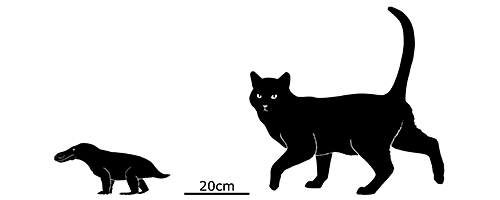Among the synapsids (“proto-mammals”), head ornamentation evolved multiple times in the therapsids, from basal members of the group like Tetraceratops, burnetiamorphs, and dinocephalians to later lineages like dicynodonts and gorgonopsids.
But these sorts of structures don’t seem to have really ever developed in one of the lineages most closely related to the ancestors of modern mammals, a group known as therocephalians.
…With the exception of Choerosaurus dejageri.
Living in South Africa during the late Permian, around 259-254 million years ago, this small synapsid was only about 35cm long (1’2″) but sported some large bulging bony bosses on the sides of both its snout and lower jaw.
The bosses would have been covered by tough skin in life, similar to modern giraffid ossicones.
A study of Choerosaurus‘ skull found that its head was rather delicately built, and the bosses were relatively fragile and lacked the sort of reinforcement needed to resist impacts, suggesting that these structures weren’t used as weapons for fighting each other but were probably more for display – so they may even have been brightly colored.
The upper jaw bosses were also well-supplied with nerves and blood vessels, and would have been quite sensitive to touch.


